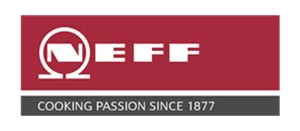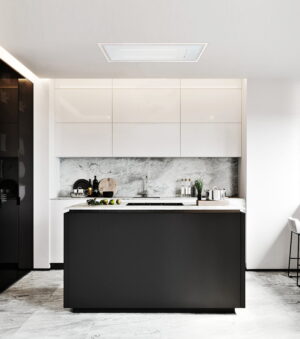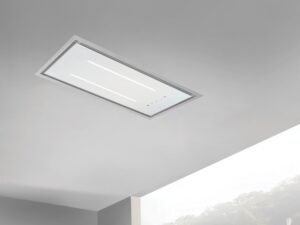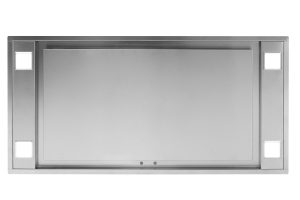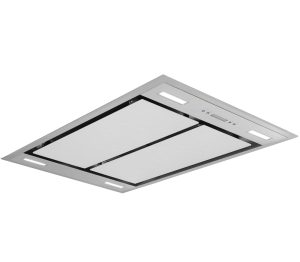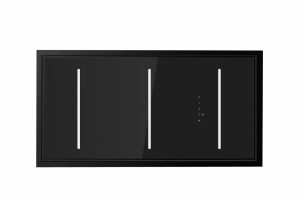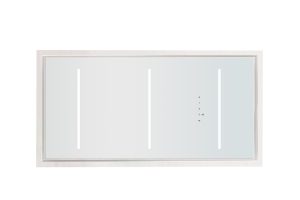No products in the cart.

Ceiling Cooker Hoods
Maximise kitchen space with our sleek, high-performance ceiling cooker hoods. These flush-fit extractor fans suit open-plan living by design and match every installation requirement, delivering powerful kitchen ventilation without compromising style.
Perfect for removing steam, smoke and cooking odours. While classic cooker hoods are a stylish kitchen feature, the ceiling hood alternative keeps your ceiling line clean and uncluttered.
Best Sellers
Some of our best selling ceiling cooker hoods.
Ceiling Hoods Sale
Quick, catch our sale below.
Ceiling Extractor Hoods
Ceiling extractor hoods are the ultimate solution for clean, uninterrupted kitchen design. Ideal for open-plan layouts or kitchens with islands, they provide powerful extraction from above without bulky units or visual clutter.
Modern Living Direct offers a selection of high-spec ceiling extractor fans designed to remove steam, grease and odours efficiently – while staying hidden in plain sight.
Key features include:
- Flush-fit installation for a seamless ceiling line
- Powerful ducted or recirculating ventilation options
- Integrated LED lighting to brighten your cooking area
- Smart controls and multiple speed settings
- Quiet operation, ideal for sociable kitchen spaces
Whether you’re after minimalist style or practical performance, our ceiling cooker hoods deliver discreet elegance with no compromise on air quality.
What Do I Need to Know Before Purchasing a Ceiling-Mounted Cooker Hood?
Before you purchase a ceiling-mounted cooker hood, there are several things you must consider before putting money on the table. Some of the biggest mistakes made when buying a ceiling-mounted cooker hood include:
- Forgetting the restrictions of particular models and their resulting suitability for your kitchen (eg, lack of facilities for ducting or minimal ceiling cavity space to house a recirculation model).
- Miscalculating your required extraction efficiency.
- Misunderstanding the benefits and disadvantages of various types of ceiling-mounted cooker hoods (eg. Volume, installation expenses, extraction capacity, and maintenance demands.
Fortunately, you will find all this information and more in our complete ceiling cooker hood buying guide. This guide will help you make an informed decision about the most suitable cooker hood for your kitchen. So, read our buying guide and contact us with any further questions.
Ceiling Cooker Hoods FAQs
See down below for some of the most frequently asked questions about ceiling cooker hoods.
- What are the key differences between ceiling cooker hoods and island hoods?
Ceiling cooker hoods integrate into the ceiling for a streamlined, minimalist look. They are ideal for maintaining open sightlines in modern kitchens. On the other hand, Island cooker hoods hang down over the hob, often becoming a design feature in their own right.
While both suit island cooking areas, ceiling hoods offer a more discreet solution. They require ceiling void space and may involve a more complex installation.
Island hoods are easier to fit but can dominate the room visually. Your choice depends on design preference, ceiling height and installation flexibility.
- Do ceiling cooker hoods need to be ducted outside?
No, ceiling fans do not require outside ducting, but we recommend it where possible. Most ceiling cooker hoods can be either ducted externally or installed to recirculate air.
Ducting to the outside delivers the best extraction performance and completely removes moisture. Recirculating models are more flexible and use charcoal filters to neutralise odours.
These are ideal if external ducting isn’t possible. However, recirculating ceiling cooker hoods do require regular filter replacement.
- How powerful should a ceiling cooker hood be for my kitchen size?
The power of your ceiling cooker hood depends on your kitchen’s volume. Multiply the room’s length × width × height (in metres) and multiply the total by 10. That gives you the minimum extraction rate in m³/h.
For example, a 30m³ kitchen needs at least 300 m³/h. Most ceiling hoods range from 500 to over 1,000 m³/h. That makes them perfect for large, open-plan spaces.
Choose a higher extraction rate if you cook frequently or use strong-smelling ingredients.
- Are ceiling cooker hoods noisy?
Ceiling cooker hoods are not necessarily noisy. In fact, modern ceiling hoods are as quiet as possible by design.
Many operate at under 70 decibels on the highest setting – about the sound of a vacuum cleaner. Some models come with external or remote motors, significantly reducing in-room noise. Fan speed settings also help control sound levels.
Always check the noise rating before purchasing.
- How do I clean and maintain a ceiling cooker hood?
To maintain a ceiling cooker hood, clean the metal grease filters regularly. These are often dishwasher-safe for easy maintenance.
If using a recirculating model, replace charcoal filters every 3 to 6 months, or possibly more frequently depending on how often you cook.
Wipe the exterior with a soft cloth and a mild, non-abrasive cleaner.
Avoid harsh chemicals that could damage the finish.
Regular cleaning ensures optimal performance and extends the hood’s lifespan.
- What installation considerations should I keep in mind for a ceiling cooker hood?
Several factors matter when looking to install a ceiling cooker hood. You’ll need sufficient ceiling height and void space above the ceiling for ducting or housing the motor.
A nearby power source is essential. If ducting externally, plan the shortest and straightest route possible for best performance.
Installation can be complex. So, only a qualified professional should install a ceiling cooker hood. Poor installation can lead to reduced performance or noise issues.
- Are ceiling cooker hoods energy efficient?
Yes, a lot of modern models feature energy-efficient motors and LED lighting. Many are rated A or above on the EU energy label.
Recirculating models use filters designed for long life, reducing waste. Smart features like automatic shut-off and sensor-based extraction help save power.
Always check the energy label to compare models effectively.














